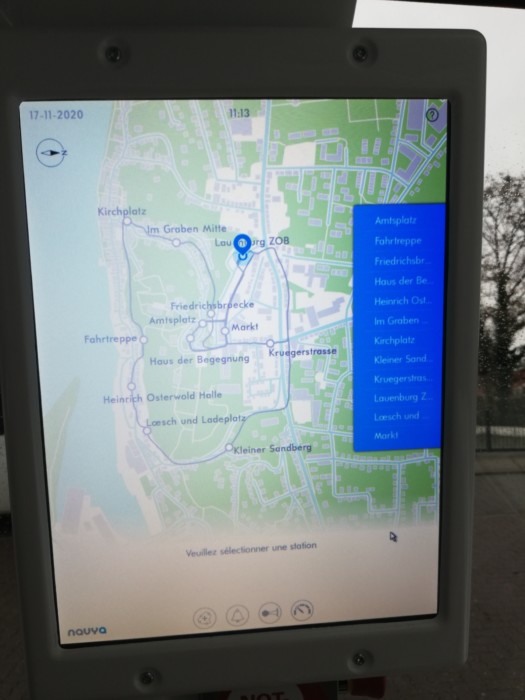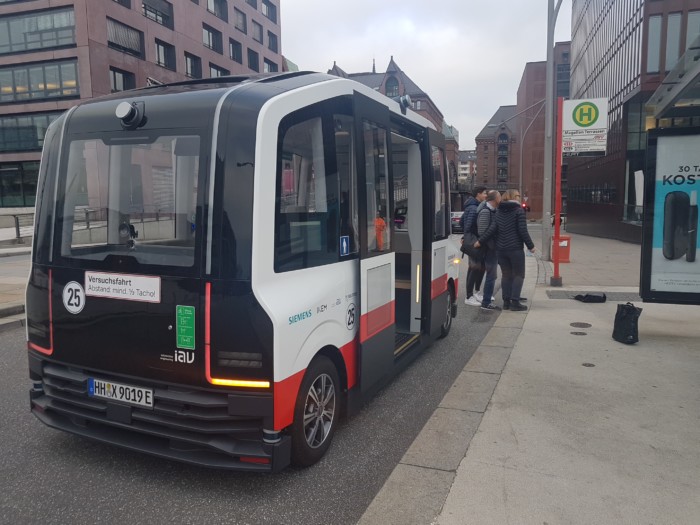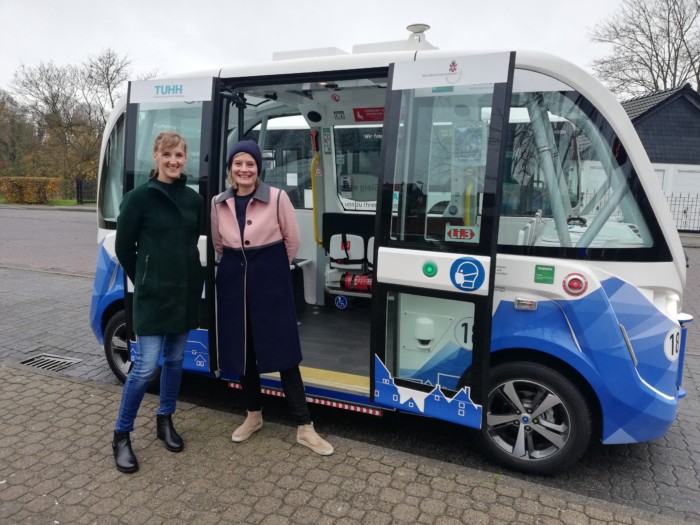As part of the EU-Interreg project ART-Forum, the project partner MOBILE ZEITEN (www.mobile-zeiten.net) visited the test center for automated buses in the Duchy of Lauenburg (TaBuLa) and the research project “Hamburg Electric Autonomous Transportation” (HEAT) together with other interested parties from the planning offices Fahrplangesellschaft and Interlink.
The aim of the visit was to take a closer look at the integration of the automated buses in mixed traffic and to encourage a sustainable exchange of experience between planning and practical implementation.
During the study tour, the participants learned about the projects and progress in automated driving. So-called operators were always on board who, as safety drivers, could intervene directly in what was happening. In this way, the participants received valuable practical insights into real operation in mixed traffic and into the skills that were already working well or not at all. The route in Lauenburg in particular, with its cobblestones, narrow streets and steep inclines, was challenging. Apart from a few manual releases at blind intersections or complicated right of way regulations, no manual intervention was necessary. Communication between the vehicle and the infrastructure such as traffic lights and bollards worked smoothly.
However, the current automated buses are still on the road with many restrictions, such as: low speed (max. 17 km/h), virtual track that cannot be left and additional orientation points.
Of course, this does not correspond to a really driverless, autonomous bus operation of Level 4 or 5 (according to SAE classification). That is still a dream of the future. Nevertheless, the current automated minibuses are good demo examples and forerunners of autonomous vehicle fleets that may become possible in the future and which will complement local public transport.




